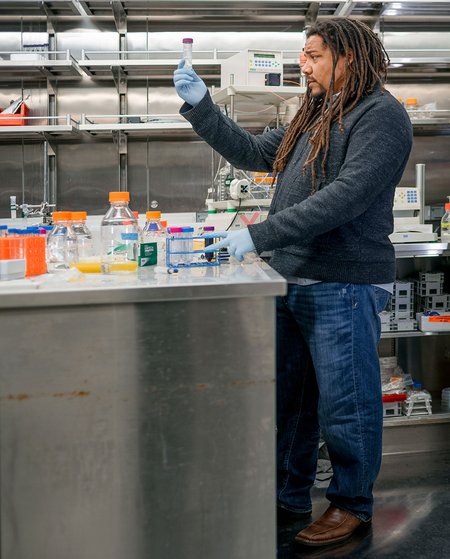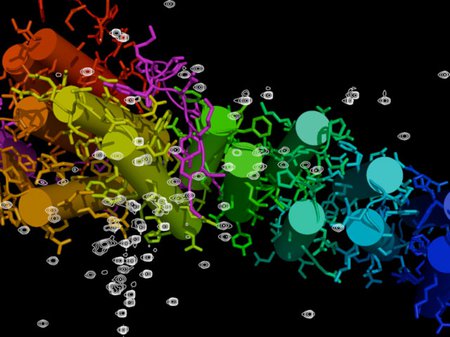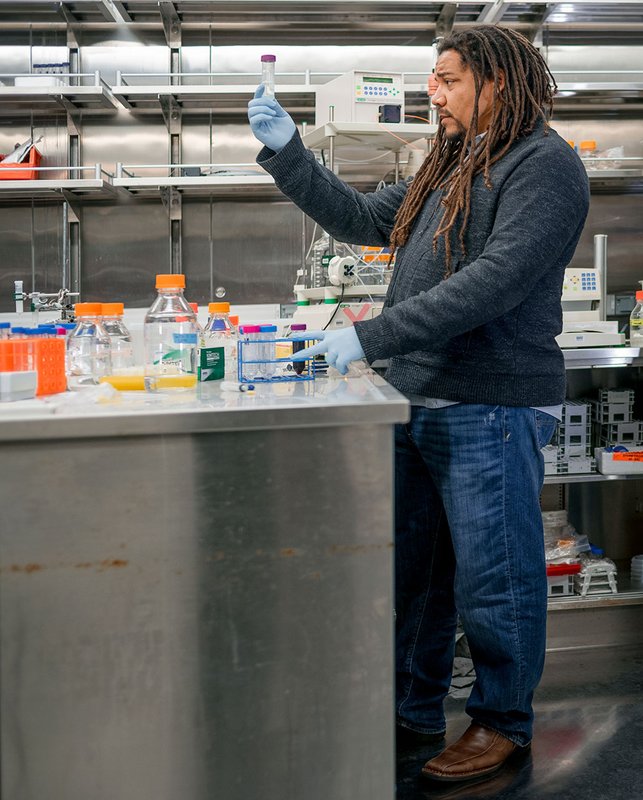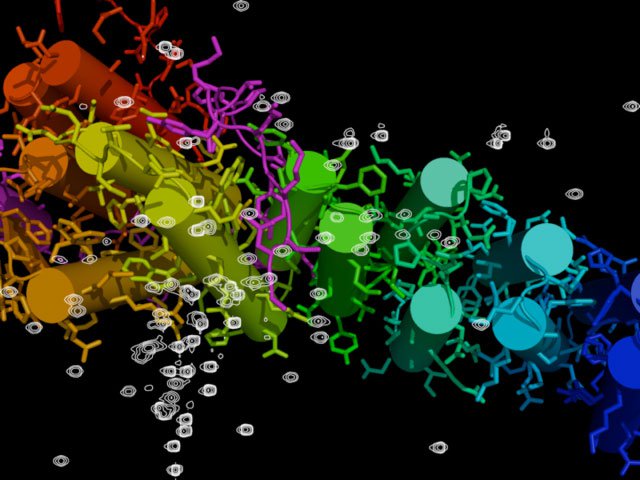How Do You Make a Greasy Protein?
Every cell is encapsulated and protected by a thin membrane made of greasy molecules called lipids. Assemblies of equally greasy protein molecules span the membrane, forming passageways that control the flow of signaling molecules that, in turn, direct the cell's activities. Because of these proteins' key role in cell-to-cell communication, they have become a prime target for drug design. Professor of Biochemistry Bil Clemons is among those working out the structures of these proteins and, more fundamentally, the biological processes behind them. Clemons will discuss how cells assemble these proteins, and how they deliver them to the membrane, at 8 p.m. on Wednesday, January 7, in Caltech's Beckman Auditorium. Admission is free.
Q: What do you do?
A: I am nominally a structural biologist, but I'm really a crystallographer. We purify a protein in solution and then try to crystallize it, which is really, really hard. When we succeed, we make X-ray diffraction patterns of the crystals and work backwards from those patterns to calculate the precise position of every atom. This allows us to make a blueprint for the molecule, and the blueprint helps us understand how the molecule does what it does. That's my group's real interest—figuring out the biological mechanisms that underlie how a protein works. We want to understand, on a molecular level, the processes by which these proteins are targeted and inserted into the membrane.
Proteins are long chains of amino acids that assume very specific three-dimensional shapes, or conformations. The proteins we work on contain hundreds of amino acids and thousands of individual atoms. These proteins interact with other molecules as they do their jobs. When they do, their conformations change, so a large part of our work is trying to understand all these different interactions and motions.
A crystal contains millions of copies of the same molecule held in exactly one conformation, so in that sense, a crystal structure is just one snapshot of a series of biological motions. Eventually we'd like to make movies of all the conformational changes that occur during these interactions—or at least render the important frames. It's almost like producing a cheap cartoon, where the lead animator draws a few key cels, and the rest is filled in later.
Q: What do you get from a crystal structure?
A: We get the first glimpse of how something works. Every crystal structure provides a huge amount of information. The beauty of structural biology is that we get to be the first people to peek under the hood of a protein and draw a three-dimensional map of what we see. Science is vast, and most people work in very narrow fields, doing mechanistic studies and drug discovery and all sorts of things. Structural biologists create the platform for everyone else's studies.
Q: How did you get into this line of work?
A: Well, I'd like to say it was a series of happy accidents. I've always been passionate about science. In my heart, I think I was born a scientist. I always wanted to know how everything worked, and biochemistry fascinated me. There was so much complexity—so many ways to ask questions.
At Virginia Tech, I was lucky enough to have an undergraduate adviser, Walt Niehaus, who encouraged me to do research in his group. There was really no looking back after that. I just thought, "Wow. This is really fun. I like doing this." Meanwhile, I was paying my way through school. My senior year I was the student manager of one of the food-service facilities. I was working nearly 40 hours a week managing 40 employees plus spending another 20 hours in the lab and 20 hours in school. I wasn't able to look past that to what my future might be, but Walt pushed me to apply for grad school. It was eye-opening the first time he suggested I could do this for a living.
Walt's research was in basic biochemistry. There weren't any structural biologists at Virginia Tech at the time, but the Howard Hughes Medical Institute sent us a booklet with stereo pictures of protein structures. I thought, "You've got to be kidding me. We can look at these things in 3-D?" It blew my mind. So I went to grad school at the University of Utah to be a crystallographer, and I earned my PhD working on the molecular machinery responsible for making proteins. Then I did my postdoctoral work at Harvard Med, trying to understand the complex process of getting greasy membrane proteins into cell membranes. We solved the structure of an important piece of the puzzle there, and now that I'm at Caltech, which has major strengths in X-ray crystallography, we're filling in the details of the bigger picture.
Named for the late Caltech professor Earnest C. Watson, who founded the series in 1922, the Watson Lectures present Caltech and JPL researchers describing their work to the public. Many past Watson Lectures are available online at Caltech's iTunes U site.
 Caltech Professor of Biochemistry Bil Clemons.
Credit: Van Urfalian/Caltech Office of Strategic Communications
Caltech Professor of Biochemistry Bil Clemons.
Credit: Van Urfalian/Caltech Office of Strategic Communications
 Credit: Bil Clemons
Credit: Bil Clemons


